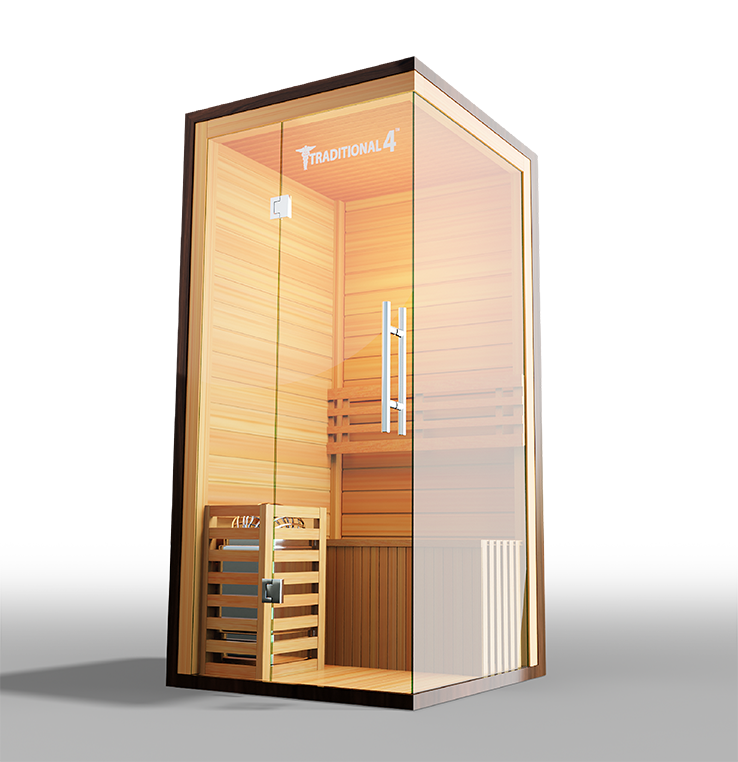Traditional Sauna Things To Know Before You Get This
Traditional Sauna Things To Know Before You Get This
Blog Article
The Ultimate Guide To Traditional Sauna
Table of ContentsTraditional Sauna for BeginnersRumored Buzz on Traditional SaunaTraditional Sauna for DummiesAbout Traditional Sauna
A lot of the weight lost in a sauna is water loss and is re-gained upon rehydrating. Without a question sauna can be a crucial part of a healthy and balanced weight loss program. To take a look at the distinctions in between standard and IR saunas, I will divide these into verifiable, academic, and fabricated distinctions.Thus, the most popular point in the saunawhich goes to the ceiling directly above the sauna heateris typically in between 185 and 190 F. Traditional Sauna. Claims that a traditional sauna exceeds 200 F is merely not true and not suitable for electric saunas sold in the United States. The temperature for a far-infrared sauna is generally established in between 120 and 140 F; nevertheless, unlike the standard sauna, the goal in and IR room is not to accomplish a heat
Due to this, the temperature distinction is nearly unnecessary, since excessive sweating causes both sauna types, but the method of heating the body is different. In an IR sauna the bather will certainly really feel hot and will certainly sweat profusely, however at a lot lower temperature levels. Therefore, if the goal is to spend longer durations of time in the sauna, the IR sauna is an excellent option.

The 7-Minute Rule for Traditional Sauna
When the heat is accomplished, the aspects cycle on and off to maintain the high temperature level. Many standard sauna customers enjoy pouring water over the rocks to create heavy steam to raise sauna moisture levels. The benefits of pouring water over the rocks include: making the area a lot more comfy, moistening the nasal flows, and permitting the usage of aromatherapy by mixing necessary oils with the water.
In a far-infrared sauna, the heat waves penetrate the body to efficiently heat the body and elevate the body core temperature level. To attain this boosted temperature, Far-infrared emitters develop infrared power which is close to the very same wavelength as that which the body normally emitsoften described as the "Important Range" of 7 to 14 microns), so the power is well received by the body.
When the energy goes into the body, it triggers the body temperature level to enhance and ultimately results in sweat. In an infrared sauna it is necessary for the emitters/heaters to remain on almost constantly. Since there is no mass of rocks to maintain warm, the sauna will cool down if the emitters shut down.
As mentioned above, the sauna bather in an infrared room intends to position why not find out more himself in front of operating emitters to get maximum gain from the heat. The heating time for both rooms can be extremely different, depending upon exactly how the spaces are utilized. For a standard sauna, a bather needs to allow 30-40 minutes for the room to attain a wanted temperature level and to appropriately pre-heat the rocks.
Our Traditional Sauna Ideas
A well built sauna will generally attain a temperature of 150-160 F in concerning 30-40 mins. For hotter temperature levels, the area may require to heat for a longer period.
To some, 15 minutes was "squandered" while the infrared power warmed the wood panels rather than heating a body, while others discover a pre-heated space to be more comfy and believe an elevated beginning temperature is needed to begin perspiring. The size of advised usage for each and every space is approximately the very same (10-15 minutes per session); however, because of the reduced air temperatures and the capability to really feel the effects of infrared warmth much faster than a standard sauna, more it is not uncommon for an individual to spend a total of 20-30 minutes in an infrared sauna.
Conventional saunas have a tendency to be bigger (thus make use of more electricity) than infrared saunas, although traditional saunas are certainly readily available in one and two individual sizes too. For a two-person conventional sauna, 5x6 or 5x7 size is most prominent. The top bench can easily seat 2 or 3 individuals and is likewise long sufficient to exist down throughout the sauna session.


The ordinary expense per kWH of electrical power in the U.S. is approximately $0.11, so a 4.5 kW heater will certainly set you back roughly $.50 to run for one hour, if the heater runs continuously for one hour. Usually a sauna heating system will certainly run for 75% of the first hour and 50% of subsequent hours on because the components cycle once the set temperature level is achieved.
The Definitive Guide to Traditional Sauna
A 2 person far-infrared room is usually physically smaller than official source a conventional sauna, usually about 4' x 4' or smaller. The IR heating unit is typically 1.5-1.7 kW making use of a 120 volt 15 amp plug-in solution. Because the room can be used earlier than a sauna space, we will presume the space is used for to of an hour including warm up time.
There is a hardly ever discussed difference in the social experience between the 2 spaces. While our culture has actually lost several of the social advantage of the conventional sauna experience, it can be very socially satisfying. From family time in the sauna, to heart-felt conversations with better halves, to sauna partiesthe standard sauna experience can cause intimate mingling.
Most greater end infrared areas include tinted light treatment, noise systems and full-glass fronts.
Report this page